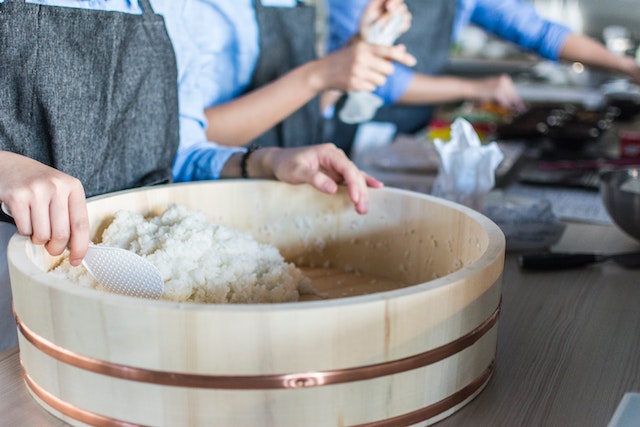
Cooking is both an art and a science. The use of different techniques and methods can make the difference in creating an unforgettable dish. At the core of Japanese cuisine lies mastery of several fundamental techniques that make up the foundation of their cooking philosophy. Whether you’re an amateur cook or an experienced chef, mastering these techniques can elevate your culinary creations to new heights.
Umami: The Fifth Taste
Umami, often referred to as the fifth taste, is a concept deeply ingrained in Japanese cuisine. It is a flavor profile that is savory, rich, and satisfying—an almost indescribable taste that adds depth and complexity to dishes. Understanding and harnessing the power of umami is essential for creating truly exceptional Japanese dishes.
The Concept of Umami
The word umami comes from the Japanese words “umai,” meaning delicious, and “mi,” meaning taste. It was first identified by Kikunae Ikeda, a Japanese chemist, in the early 20th century. Umami is considered a distinct taste sensation, alongside sweet, sour, salty, and bitter.
Umami is often described as a meaty or brothy flavor, but it goes beyond that. It is a taste that lingers on the tongue, imparting a sensation of richness and satisfaction. Umami is present in a wide range of foods, both natural and processed, and can be enhanced through various cooking techniques.
Ingredients and Cooking Methods that Enhance Umami Flavors
Several ingredients and cooking methods are known for enhancing umami flavors in Japanese cuisine. Here are some key ones to explore:
Dashi: Dashi is a stock made from kombu (dried kelp) and katsuobushi (dried bonito flakes). It forms the base of many Japanese dishes and is a key source of umami. Simmering kombu and bonito flakes in water extracts their rich flavors, creating a deeply savory broth.
Shoyu (Soy Sauce): Soy sauce is another umami-rich ingredient commonly used in Japanese cooking. It is made from fermented soybeans and adds depth of flavor to dishes. Different types of soy sauces, such as light and dark, can be used to enhance umami in specific recipes.
Miso: Miso is a fermented soybean paste that is packed with umami. It is used in soups, marinades, and glazes, providing a complex and savory taste. There are different types of miso—light, medium, and dark—each with its own unique flavor profile.
Shiitake Mushrooms: Shiitake mushrooms are prized for their umami-rich taste. They have a meaty texture and are often used in soups, stir-fries, and simmered dishes to enhance their savory flavors.
Grilling and Roasting: Grilling and roasting are cooking techniques that intensify umami flavors. The high heat caramelizes the surface of the food, creating a Maillard reaction that enhances the savory taste.
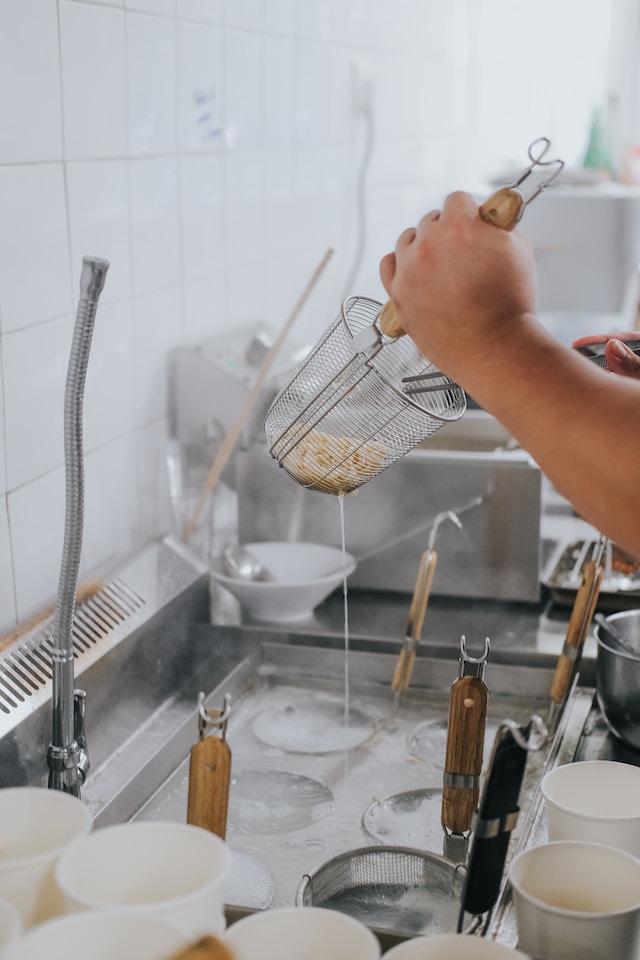
Umami-Rich Dishes and Techniques
Miso Soup: Miso soup is a classic Japanese dish that showcases the umami flavors of miso and dashi. It usually contains tofu, seaweed, and sometimes mushrooms, creating a comforting and flavorful soup.
Grilled Mackerel: Grilling fatty fish, like mackerel, brings out its natural umami flavors. The charred skin and succulent flesh create a delicious and satisfying dish.
Sukiyaki: Sukiyaki is a hot pot dish made with thinly sliced beef, tofu, and vegetables. The combination of soy sauce, mirin, and sugar in the cooking sauce enhances the umami taste of the ingredients.
Tamagoyaki (Japanese Rolled Omelette): Tamagoyaki is a sweet and savory rolled omelette that derives its umami flavors from a mixture of soy sauce, mirin, and dashi. It is a staple in Japanese breakfast or as a topping for sushi.
Knife Skills and Precision
In Japanese cuisine, knife skills play a crucial role in the preparation of ingredients. From precise cuts to delicate slices, the art of knife work is essential for achieving the perfect texture, presentation, and flavor in Japanese dishes. Understanding the significance of knife skills and mastering the techniques can greatly enhance your culinary creations.
Essential Japanese Knives and Their Uses
Japanese knives are renowned for their superior craftsmanship and unrivaled sharpness. Each knife has a specific purpose and is designed to excel in a particular task. Here are a few essential Japanese knives and their uses:
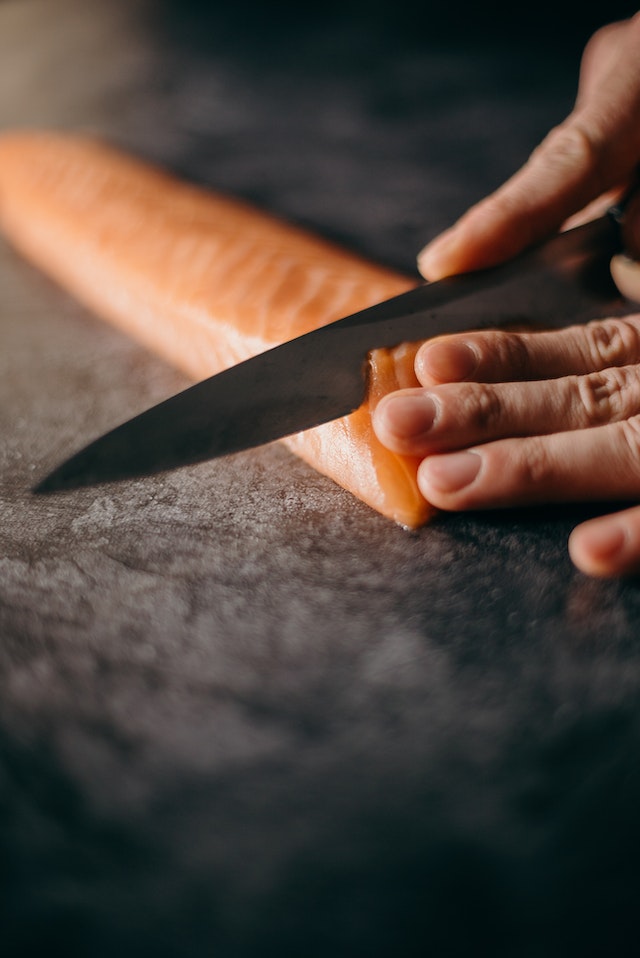
Gyuto (Chef’s Knife): The gyuto is the most versatile knife, resembling the Western chef’s knife. Its long, thin blade is perfect for slicing, dicing, and chopping a wide range of ingredients.
Santoku: The santoku knife is known for its wide blade and straight cutting edge. It excels at slicing, dicing, and chopping vegetables, making it a popular choice for home cooks.
Yanagiba (Sashimi Knife): The yanagiba is a long, thin knife with a single beveled edge. It is specifically designed for slicing raw fish into delicate sashimi or sushi.
Deba: The deba knife is a thick, heavy knife primarily used for cutting and filleting fish. Its sturdy blade can handle tough tasks like deboning and breaking down poultry.
Techniques for Proper Knife Handling and Cutting Styles
Grip and Posture: Proper grip and posture are crucial for safety and precision. Hold the knife with a firm yet relaxed grip, ensuring your fingers are curled around the handle. Stand with your feet shoulder-width apart and maintain a stable stance for better control.
Honing and Sharpening: Regular honing and sharpening of your knives are essential for maintaining their edge. Use a honing rod to realign the edge before each use, and sharpen the blade using a whetstone to keep it in optimal condition.
Cutting Styles:
Katsuramuki: This technique involves peeling thin, continuous sheets from cylindrical fruits or vegetables like daikon radish or cucumber. It requires a precise and controlled slicing motion to achieve thin, even strips.
Slicing: Slicing is a basic cutting technique used for creating uniform slices of ingredients like meat, fish, or vegetables. Use a smooth, gliding motion while maintaining a consistent thickness throughout.
Julienne: Julienne is a technique used to create thin, matchstick-like strips. Start by cutting the ingredient into uniform rectangular shapes, then slice them thinly to achieve the desired size.
Chiffonade: Chiffonade is a technique used for cutting herbs or leafy greens into thin, delicate ribbons. Stack the leaves, roll them tightly, and make thin, precise cuts perpendicular to the roll.
Mincing: Mincing is the fine chopping of ingredients into tiny pieces. Hold the tip of the knife on the cutting board, pivot the handle up and down, and use a rocking motion to chop the ingredient.
Sashimi: Sashimi requires precision and control to create thin, even slices of raw fish. Hold the knife at a slight angle and use long, smooth strokes to achieve delicate slices.
By honing your knife skills and mastering the art of Japanese knife techniques, you can elevate your culinary creations to new heights. With practice and patience, you will be able to achieve the precision and finesse necessary to create visually stunning and incredibly delicious Japanese dishes.
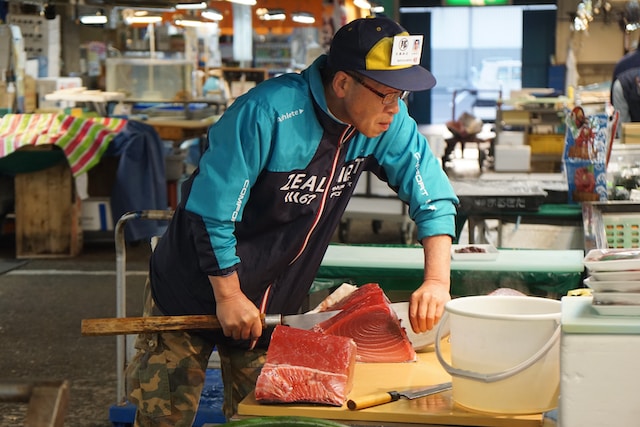
Grilling (Yakimono)
Grilling is a method of cooking that involves direct heat from a fire source. It is one of the oldest and simplest cooking techniques. Japanese grilling methods are known for their use of binchotan or white charcoal which burns at a high temperature and imparts a smoky flavor to the dish. Grilled fish, meat, and vegetables are commonly served in restaurants and homes alike. Sumptuous dishes like yakitori (skewered chicken), yakiniku (grilled beef), and robatayaki (grilled seafood) are just a few examples of the various grilled dishes that can be prepared using this technique.
Deep-frying (Agemono)
Deep-frying is a cooking method that involves submerging food in hot oil. It is a popular Japanese cooking technique that is used to create crispy tempura or juicy karaage. Tempura, which is typically made by dipping vegetables or seafood in a light, airy batter and then frying it until crispy, is one of the most iconic Japanese dishes. Karaage, on the other hand, involves marinating chicken pieces in soy sauce, garlic, ginger, and other spices before coating them in flour or potato starch and frying them until golden brown.
Simmering (Nimono)
Simmering, also known as stewing or braising, is a cooking method that involves cooking food in a liquid over a low heat for an extended period. This technique is used to make hearty stews, soups, and braised dishes that are full of flavor. Japanese simmered dishes, or “nimono,” are typically made using a mix of umami-rich ingredients like mushrooms, soy sauce, and bonito flakes. Popular examples of nimono include nikujaga (beef stew with vegetables), oden (a one-pot dish that includes tofu, seafood, and vegetables simmered in dashi broth), and sukiyaki (a hot pot-style dish made with thinly sliced beef, vegetables, and tofu).
Sushi and Sashimi
Sushi and sashimi are perhaps the most iconic Japanese dishes. They involve the use of raw fish and rice, and the preparation methods are crucial to the quality of the dish.
Sushi is made by combining sushi rice (seasoned with vinegar, sugar, and salt) with various fillings like raw fish, vegetables, or egg. Sashimi, on the other hand, is the served sliced raw fish on its own, often accompanied with wasabi and soy sauce. Quality seafood is essential to both dishes, and proper preparation methods are essential to ensure its freshness and taste.
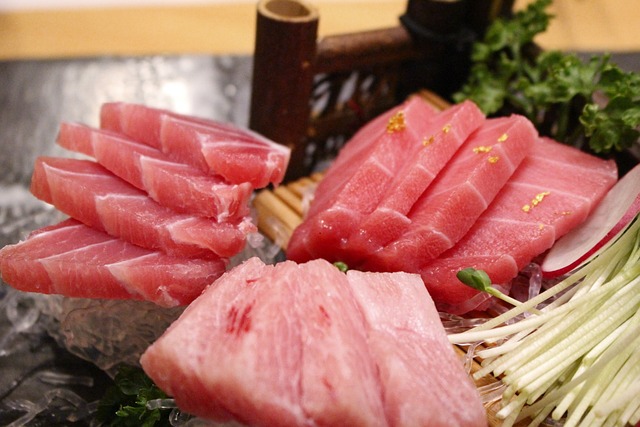
Pickling and Fermentation
Pickling and fermentation are traditional preservation methods that have been used in Japanese cuisine for centuries. These techniques not only extend the shelf life of ingredients but also enhance their flavors, creating unique and tangy taste profiles.
Pickling, or tsukemono, involves preserving vegetables in a mixture of salt, vinegar, or brine. This process not only adds a delightful sourness to the vegetables but also gives them a refreshing crunch. Tsukemono can be served as a side dish or used as a topping for rice bowls and sushi. Common vegetables used in pickling include cucumbers, daikon radishes, and cabbage.
Fermentation, on the other hand, is a process that relies on the natural action of bacteria and yeast to transform the flavor and texture of ingredients. Fermented foods, known as “koji,” are a staple in Japanese cuisine. Soybeans are transformed into miso through fermentation, which results in a rich, savory paste that adds depth of flavor to a variety of dishes. Another popular fermented ingredient is soy sauce, which develops its distinct umami taste during the fermentation process.
Natto, a fermented soybean dish, is highly regarded for its nutritional value and distinctive flavor. It has a pungent aroma and slimy texture that may take some getting used to, but is beloved by those who appreciate its unique taste.
In addition to these traditional methods, Japanese cuisine also incorporates other fermentation techniques, such as making sake (rice wine) and shio-koji (a fermented rice seasoning).
Mastering the techniques of Japanese cuisine can unlock a world of flavor and creativity in your kitchen. From harnessing the power of umami to perfecting knife skills, each technique adds depth and complexity to your culinary creations. Whether you’re grilling, deep-frying, simmering, or pickling, the art of Japanese cooking brings together tradition and innovation to create unforgettable dishes. So, embrace the techniques, explore new flavors, and let the spirit of Japanese cuisine inspire your culinary journey. Happy cooking!

